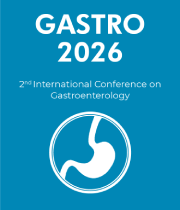Non-alcoholic Fatty Liver Disease
Nonalcoholic fatty liver disease (NAFLD) is a medical condition in which fat accumulates in the liver, leading to inflammation and, in some cases, cirrhosis. It is the most common form of chronic liver disease in Western countries and is estimated to affect up to 25% of the population. NAFLD is most commonly associated with obesity and metabolic syndrome, and it is thought to be a result of insulin resistance. Other risk factors include a high-fat diet, high triglycerides, and type 2 diabetes. The most common symptom of NAFLD is an enlarged liver, but it can also cause abdominal discomfort, malaise, and fatigue. In some cases, it can lead to cirrhosis, or permanent scarring of the liver. Diagnosis is made through physical examination, imaging studies, and blood tests. Treatment typically involves lifestyle modifications, such as weight loss, exercise, and a healthy diet. In some cases, medications may be prescribed. It is important to monitor NAFLD closely, as it can lead to serious complications. These include an increased risk of cardiovascular disease, liver cancer, and liver failure. To reduce the risk of progression to these more serious conditions, lifestyle modification is the most important intervention.



